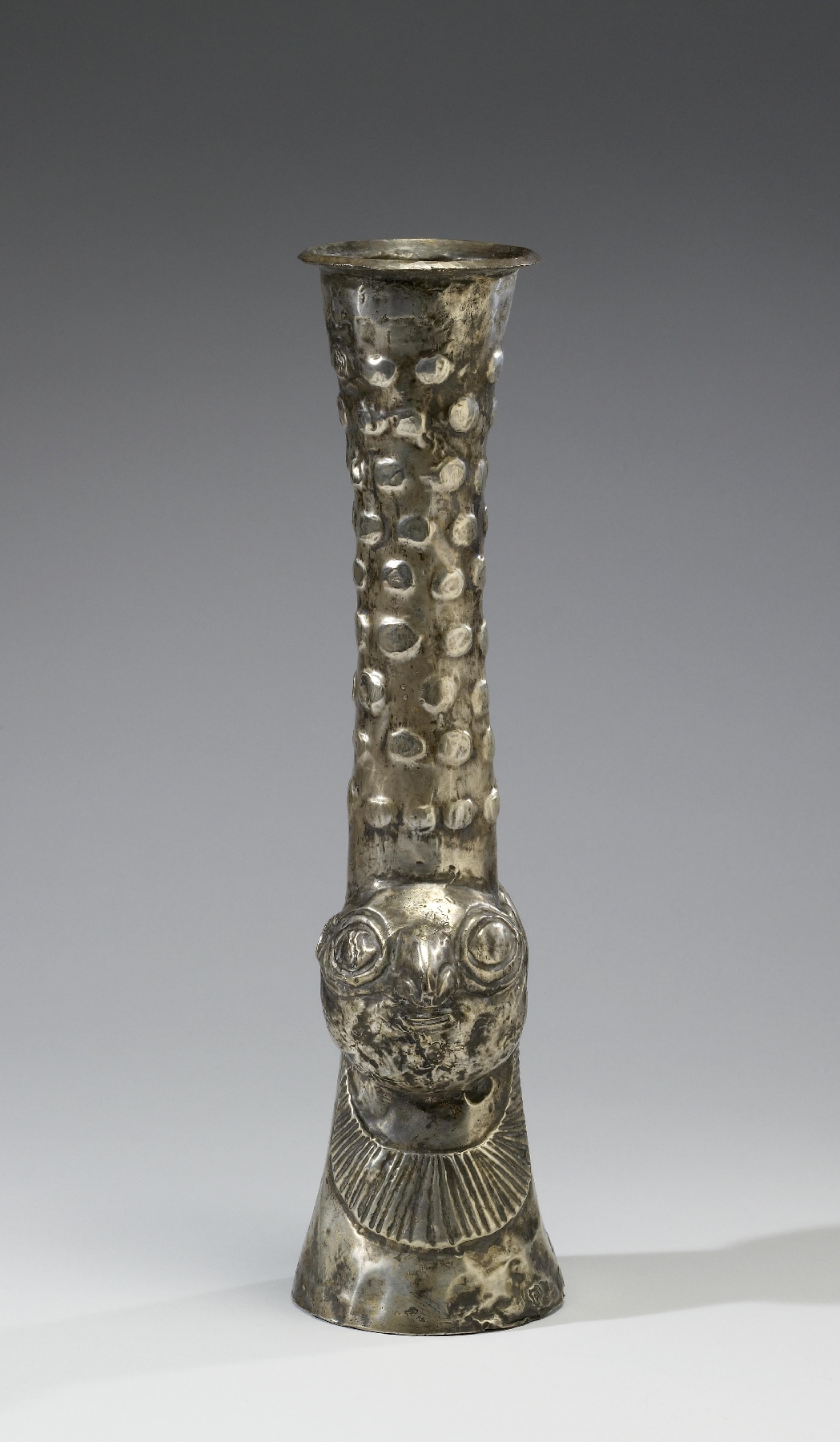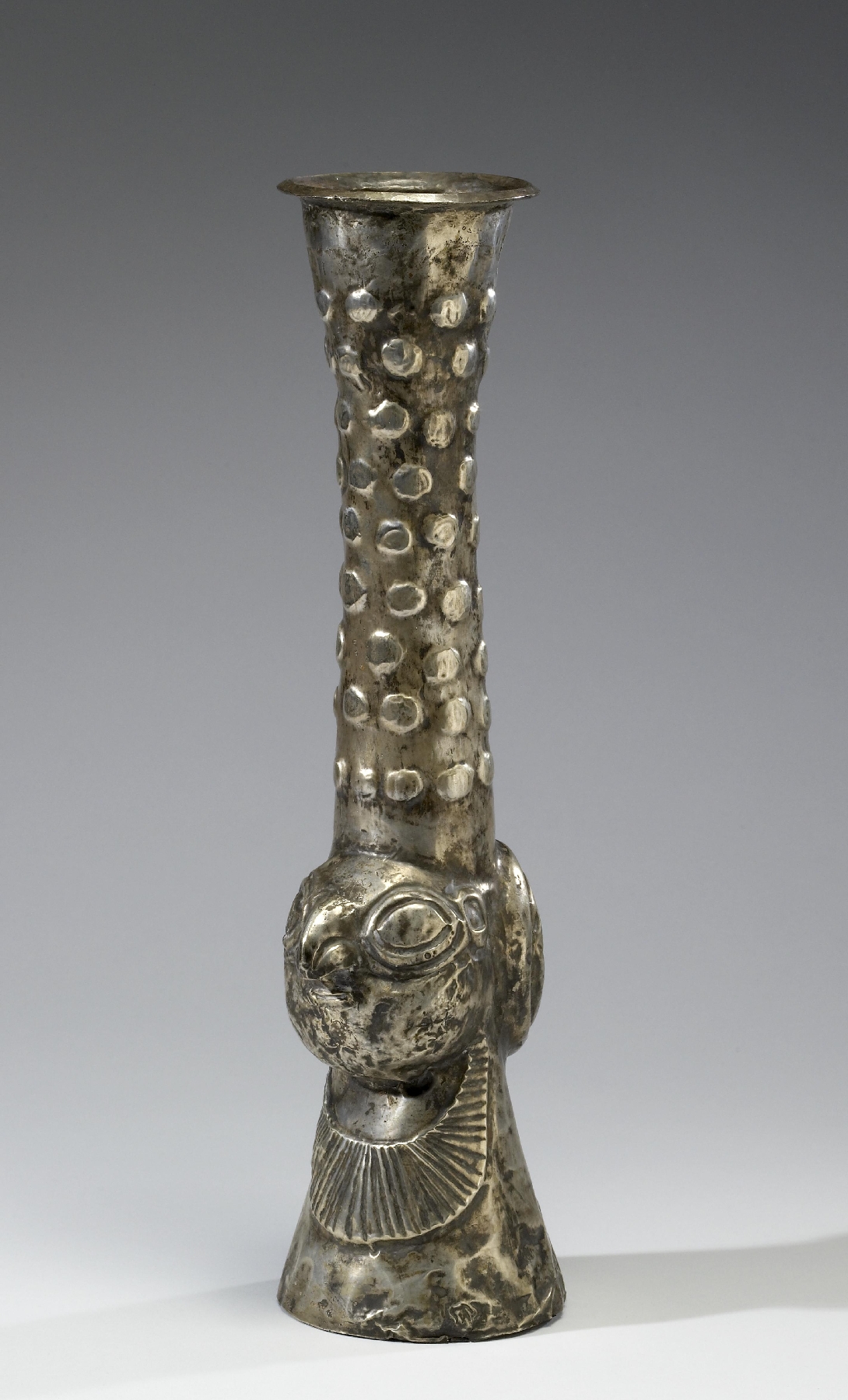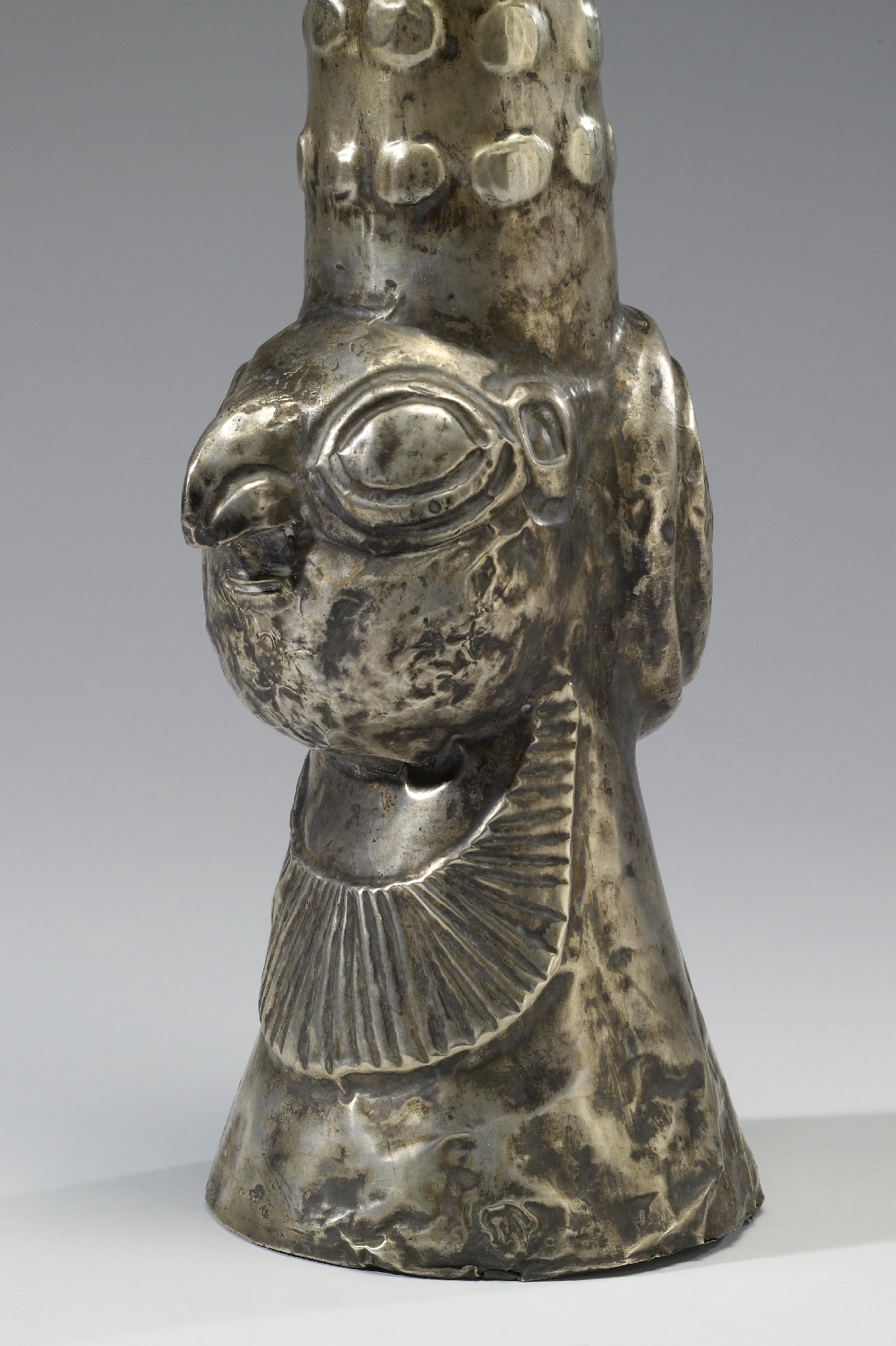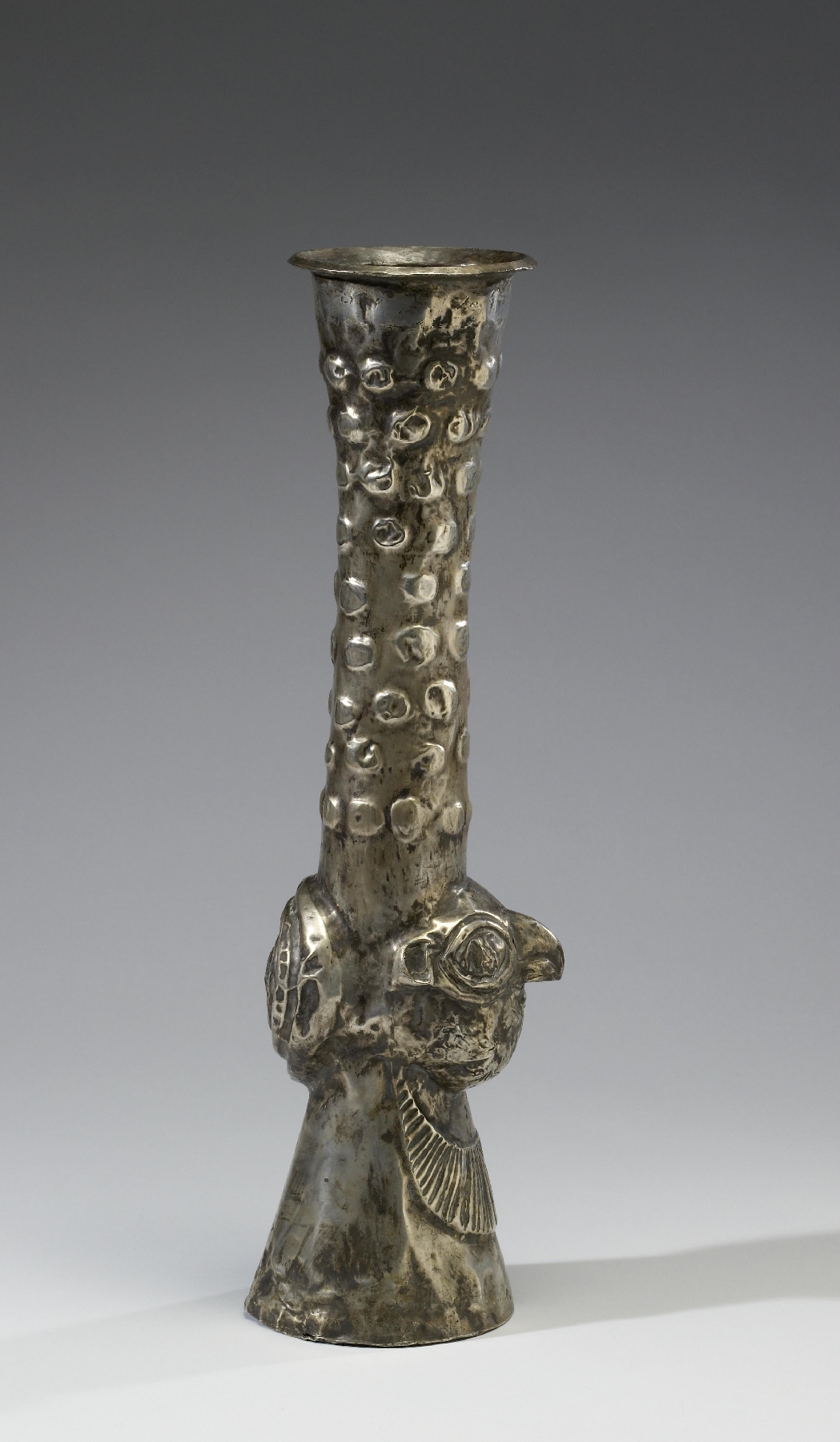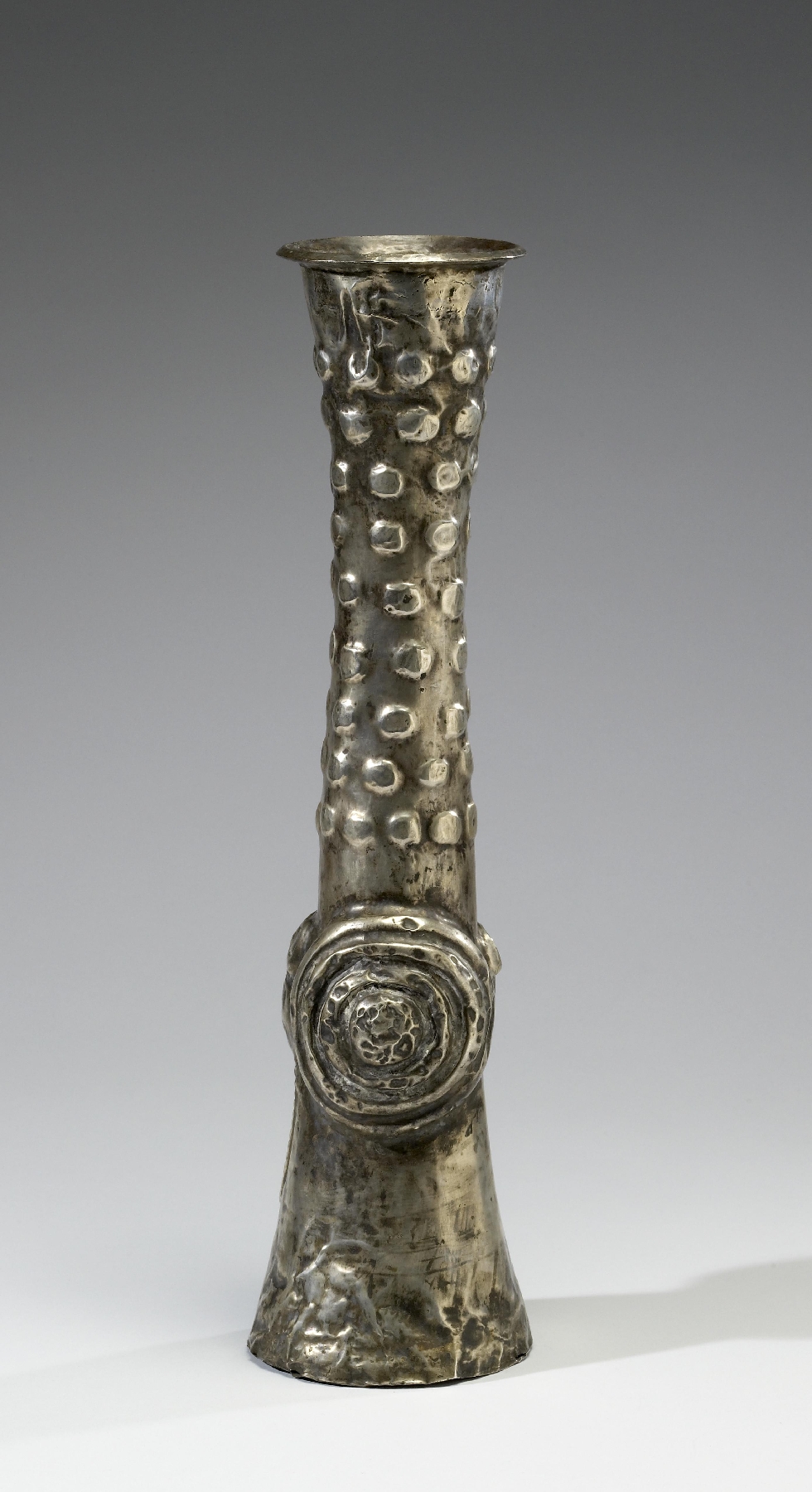Drinking Vessel ("Aquilla")
(Ancient Americas )
The "aquilla" (when executed in metal) or "kero" (when made of wood) was the principal ritual libation vessel among the peoples of ancient Peru, Bolivia, and northern Chile. This distinctive vessel form has ancient origins but became particularly prevalent during the Early Intermediate Period (100-600 CE). This dynamic time witnessed socio-political intensification and an increase in the numbers of political elites throughout the Andes, with an interconnected multiplication of aristocratic ceremonial events that emphasized hierarchy and authority. The ritual consumption of "chicha" (maize beer), the mildly alcoholic beverage traditionally served in aquillas or keros, was integral to these politically charged social events.
This libation vessel diverges from the typical aquilla's beaker form, being much taller and narrower than most.
The Chimú aquilla is unusually tall and embellished with a frontal face. The choice to execute it in precious silver also marks it as particularly significant, perhaps for an important ceremony or for placement in the tomb of an elite.
Provenance
Provenance (from the French provenir, 'to come from/forth') is the chronology of the ownership, custody, or location of a historical object.
Ron Messick Fine Arts, Santa Fe, New Mexico [date and mode of acquisition unknown]; John G. Bourne, 1990s, by purchase; Walters Art Museum, 2009, by gift.
Exhibitions
| 2012-2013 | Exploring Art of the Ancient Americas: The John Bourne Collection Gift. The Walters Art Museum, Baltimore; Frist Center for the Visual Arts, Nashville. |
| 1998-2008 | Art of Ancient America, 1500 B.C.-1400 A.D.. Museum of New Mexico, Santa Fe. |
Conservation
| Date | Description | Narrative |
|---|---|---|
| 7/13/2011 | Treatment | cleaned; coated |
Geographies
Peru, North Coast (Place of Origin)
Measurements
H: 16 7/8 x W: 4 3/8 x D: 4 5/8 in. (42.9 x 11.1 x 11.8 cm)
Credit Line
Gift of John Bourne, 2009
Location in Museum
Not on view
Accession Number
In libraries, galleries, museums, and archives, an accession number is a unique identifier assigned to each object in the collection.
In libraries, galleries, museums, and archives, an accession number is a unique identifier assigned to each object in the collection.
2009.20.5

